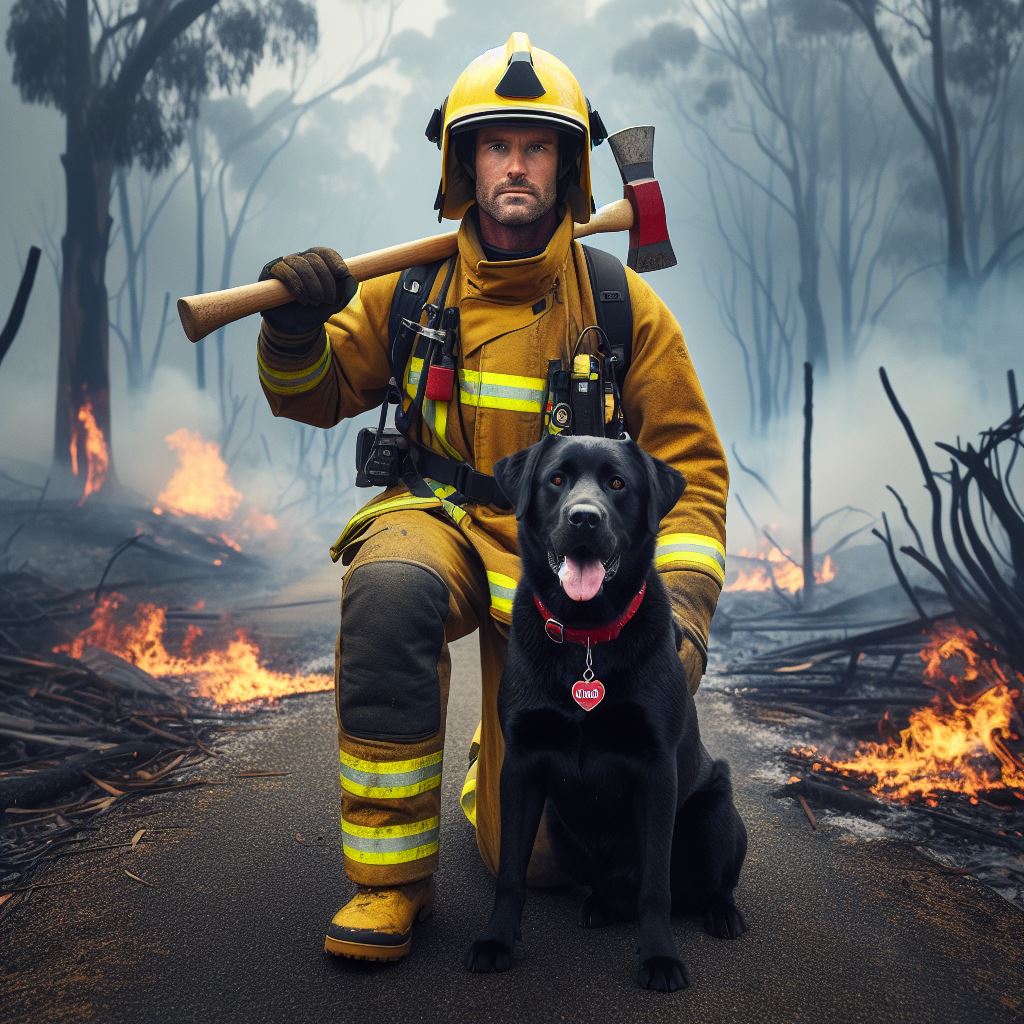Introduction
Fires can be devastating, causing loss of life and property. In Australia, stringent fire codes and safety laws are in place to prevent such disasters. These regulations are crucial for maintaining public safety and minimizing the risk of fire incidents.
The government establishes Australian fire codes and safety laws to ensure fire-safe design, construction, and maintenance of buildings, infrastructure, and public spaces.
These regulations cover various aspects, including fire prevention measures, building codes, fire protection systems, evacuation procedures, and emergency response plans.
The purpose of this blog post is to provide readers with a comprehensive understanding of the Australian fire codes and safety laws.
By highlighting the importance of these regulations, we aim to raise awareness about fire safety and empower individuals to take preventive measures in their homes and workplaces.
Throughout this section, we will delve into specific aspects of these codes and laws, discussing their significance and implications.
By understanding the requirements and guidelines set forth in Australian fire codes, individuals can ensure that they are complying with the necessary safety measures. Additionally, knowledge of these laws enables individuals to hold accountable those responsible for maintaining safe public spaces.
In the following sections, we will explore key components of Australian fire codes and safety laws, such as the Building Code of Australia, fire safety audits, and enforcement mechanisms.
We will also discuss the role of individuals in promoting fire safety and the importance of community awareness and preparedness. Stay tuned for valuable insights into ensuring fire safety in Australia.
Overview of Australian Fire Codes
Definition of Fire Codes
Fire codes are sets of regulations and guidelines designed to prevent and minimize the risk of fire incidents.
Importance of Fire Codes in Ensuring Safety
Fire codes play a crucial role in safeguarding lives, properties, and the environment from the devastating impact of fires.
- Prevention: Fire codes establish measures to prevent fires by promoting safe building materials, designs, and construction practices.
- Protection: They ensure the installation and maintenance of fire detection and suppression systems, such as smoke alarms and fire sprinklers.
- Evacuation: Fire codes mandate the inclusion of proper means of egress, such as emergency exits and fire evacuation plans, for safe evacuation of occupants during emergencies.
- Firefighting: They prescribe the availability and accessibility of firefighting equipment, like fire extinguishers, to combat fires effectively.
- Inspection and Enforcement: Fire codes set criteria for regular inspections, maintenance, and compliance to enforce fire safety measures.
Brief History of Fire Codes in Australia
Fire codes in Australia have evolved over time to address the unique fire risks and challenges faced by the country.
- Early Years: In the early settlement period, fire safety was a significant concern due to flammable materials and inadequate firefighting capabilities.
- 19th Century: The first fire brigades were established, and some local authorities started implementing basic fire regulations.
- 20th Century: With industrialization and urbanization, fire risks increased, leading to the development of standardized fire codes.
- Modern Era: Today, Australia has a comprehensive fire code system, with national, state, and local regulations addressing various aspects of fire safety.
The fire codes in Australia are primarily based on the National Construction Code (NCC), which incorporates the Building Code of Australia (BCA) and the Plumbing Code of Australia (PCA).
Over the years, constant revisions and updates to fire codes improve safety standards, integrate technological advancements, and align with international best practices.
Australia has also adopted performance-based codes, allowing flexibility in compliance while ensuring equivalent or higher levels of fire safety.
In review, fire codes are instrumental in preventing and minimizing fire risks, protecting lives and properties, and facilitating efficient fire response and evacuation. The continuous evolution and enforcement of fire codes ensure that Australia remains resilient against the threat of fires.
Read: Technology’s Impact on Diplomacy
Key Elements of Australian Fire Codes
Fire safety codes and laws are of utmost importance to prevent and mitigate fire accidents in Australia. Designing these regulations ensures the safety of both individuals and properties.
Australian fire codes cover key elements, differing based on building types—residential, commercial, or industrial.
Fire safety requirements for residential buildings
Smoke alarm installation and maintenance
In residential buildings, smoke alarm installation and maintenance are key requirements. Smoke alarms play a crucial role in detecting the presence of smoke caused by fire.
Regular maintenance ensures that they remain in working condition, minimizing the risk of fire-related injuries and fatalities.
Your Personalized Career Strategy
Unlock your potential with tailored career consulting. Get clear, actionable steps designed for your success. Start now!
Get StartedFire extinguisher regulations
Additionally, fire extinguisher regulations are in place to provide residents with a means to control small fires and prevent them from spreading.
Escape routes and emergency exit provisions
Escape routes and emergency exit provisions are another critical aspect of fire safety in residential buildings. These provisions enable residents to quickly evacuate the building in case of an emergency.
Proper signage, well-maintained pathways, and clear instructions are essential to facilitate safe and efficient evacuation.
Fire safety requirements for commercial buildings
Fire protection systems
Moving on to commercial buildings, fire protection systems are a mandatory requirement. This includes the installation of fire sprinkler systems, fire alarms, and fire suppression equipment.
These systems are designed to detect and control fires, alert occupants, and suppress the fire until emergency services arrive. Regular inspections and maintenance of these systems are necessary to ensure their effectiveness.
Occupant load and exit requirements
Occupant load and exit requirements are also enforced for commercial buildings. These regulations determine the maximum number of people allowed in a building based on its size, layout, and available exit routes.
It is crucial to have sufficient exits to accommodate all occupants in an emergency, preventing overcrowding and promoting a swift evacuation.
Flammable materials storage and handling regulations
Moreover, commercial buildings often deal with flammable materials, making the safe storage and handling of such substances essential. Strict regulations are in place to minimize the risk of fires caused by improper storage or handling practices.
Compliance with these regulations ensures the safety of both occupants and neighboring buildings.
Fire safety requirements for industrial buildings
Hazardous materials management
In industrial buildings, where hazardous materials are frequently present, specific fire safety requirements are imposed. Proper management of hazardous materials includes their safe storage, handling, and disposal.
Robust protocols and training are imperative to minimize the risk of fire accidents and mitigate their potential impact.
Sprinkler systems and fire suppression equipment
Sprinkler systems and fire suppression equipment are crucial in industrial buildings due to the higher risks involved. Designed to respond swiftly to a fire event, these systems control or extinguish flames until help arrives.
Routine inspections and maintenance are necessary to ensure their proper functioning, reducing the potential for severe fire damage.
Evacuation drills and emergency response plans
Finally, evacuation drills and emergency response plans are mandatory for industrial buildings. Regular drills familiarize occupants with the evacuation procedures and designated assembly areas.
Emergency response plans outline coordinated and swift steps to take during a fire emergency, ensuring an effective response.
In general, Australian fire codes encompass various key elements that focus on fire safety in residential, commercial, and industrial buildings. Compliance with these regulations is crucial to prevent fire accidents, minimize risks, and safeguard lives and properties.
Regular maintenance, training, and adherence to the specified requirements are necessary to ensure effective fire protection.
Read: Future of Diplomacy: Australia’s Role
Enforcement and Compliance
Roles and responsibilities of regulatory bodies
Regulatory bodies enforce Australian fire codes and safety laws.
- They are responsible for developing and implementing regulations and standards that promote fire safety.
- These bodies include government agencies such as the Australian Building Codes Board (ABCB) and the Fire and Rescue New South Wales (FRNSW).
- The ABCB is responsible for developing and maintaining the National Construction Code (NCC), which includes provisions for fire safety.
- FRNSW is responsible for enforcing fire safety regulations across the state of New South Wales.
- Regulatory bodies also collaborate with other stakeholders to develop codes and standards that meet the needs of different industries and building types.
- They engage with industry associations, professional bodies, and experts to ensure that fire codes and safety laws are up to date and effective.
- Regulatory bodies also provide guidance and support to building owners, designers, and constructors to ensure compliance with fire safety requirements.
- They offer training programs, workshops, and seminars to educate stakeholders on fire safety practices and the importance of compliance.
- Furthermore, regulatory bodies conduct research and gather data to identify emerging fire safety risks and develop strategies to address them.
Inspection and certification processes
Inspection and certification processes are essential mechanisms for enforcing compliance with fire codes and safety laws.
- Inspections are conducted by building surveyors, certifiers, and fire safety officers to ensure that buildings meet fire safety requirements.
- These inspections are carried out at different stages of a building’s life cycle, including during construction, alterations, and change of use.
- During inspections, the focus is on fire safety systems and features such as smoke alarms, fire extinguishers, sprinkler systems, and fire-rated materials.
- If deficiencies or non-compliance are identified, building owners are required to rectify these issues within a specified timeframe.
- Once a building is deemed compliant, it can be certified by a registered certifier or regulatory body.
- The certification process involves a thorough review of documentation, plans, and compliance certificates.
- Inspectors and certifiers may also carry out random audits or spot checks to ensure ongoing compliance.
- Complaints or incidents may trigger inspections; non-compliant buildings might face penalties or enforcement actions, emphasizing accountability.
Consequences of non-compliance
Non-compliance with fire codes and safety laws can have severe consequences for building owners and occupants.
- Non-compliant buildings pose a significant risk to life, property, and the environment in the event of a fire.
- Occupants may be exposed to smoke, toxic gases, and structural failures, increasing the likelihood of injuries or fatalities.
- In the case of a fire-related incident, insurance coverage may be denied if the building is found to be non-compliant.
- Non-compliant building owners may face liability claims and legal repercussions if harm or loss occurs.
- Regulatory bodies have the authority to issue infringement notices, penalties, or court orders to ensure compliance.
- Penalties may include fines, imprisonment, or the requirement to rectify deficiencies within a specified timeframe.
- In extreme cases, non-compliant buildings can be ordered to cease occupation until necessary upgrades are made.
- Building owners may also suffer reputational damage, affecting their credibility and business operations.
- Therefore, strict enforcement of fire codes and safety laws is crucial to mitigate risks and protect lives and properties.
Basically, the enforcement and compliance of fire codes and safety laws rely on the roles and responsibilities of regulatory bodies, thorough inspection and certification processes, and the consequences of non-compliance.
All involved stakeholders must prioritize fire safety, ensuring compliance to prevent devastating outcomes is essential.
Stand Out with a Resume That Gets Results
Your career is worth more than a generic template. Let us craft a resume and cover letter that showcase your unique strengths and help you secure that dream job.
Get HiredRead: Understanding Ranks in Australian Police Force

Uncover the Details: Retirement Plans for Police Officers
You Might Also Like: Technology Used by Australian Police Today
Recent Updates and Controversies
Overview of recent changes to fire codes and safety laws
- Australian fire codes and safety laws have been constantly reviewed and updated to ensure better protection.
- Recent changes have focused on improving building materials, emergency protocols, and evacuation procedures.
- Fire codes now require the installation of smoke alarms, fire sprinklers, and fire-resistant materials in buildings.
- New laws have been introduced to address the maintenance and inspection of fire safety equipment in public spaces.
- Updates also emphasize the importance of fire safety education and training for the general public.
Examination of controversies surrounding certain regulations
- Some controversies have arisen regarding the cost implications of implementing new fire safety regulations.
- Business owners and property developers argue that these regulations can be financially burdensome.
- There are concerns that stringent fire codes may hinder innovation and result in delays in construction projects.
- Debates have also emerged over the privacy issues raised by the mandatory installation of fire alarm systems.
- Controversies highlight the need for a balanced approach to fire safety regulations that consider all perspectives.
Impact of climate change on fire safety concerns
- The increasing frequency and intensity of wildfires in Australia have prompted a reevaluation of fire safety measures.
- Rising temperatures, prolonged droughts, and strong winds create favorable conditions for fires to spread quickly.
- Changes in vegetation patterns due to climate change can also increase the fuel load available for fires.
- Fire codes are being updated to include measures to mitigate risks associated with climate change.
- The awareness of the link between climate change and fire safety is driving discussions on sustainable building practices.
The recent updates and controversies surrounding Australian fire codes and safety laws reflect the continuous effort to enhance fire safety across the country.
Read: How to Become a Police Officer in Australia
Conclusion
Throughout this blog post, we have explored the importance of Australian fire codes and safety laws. We have learned about the different regulations in place to ensure buildings are safe from fire hazards.
Additionally, we have delved into the requirements for fire safety equipment, emergency plans, and evacuation procedures.
Adhering to fire codes and safety laws is of utmost importance for the protection of life, property, and the environment. Adhering to regulations ensures designing, constructing, and maintaining buildings prioritize fire safety.
By following these codes, we minimize the risk of fire-related accidents and mitigate their potential consequences.
It is crucial for individuals and organizations to stay informed and up to date with any changes or updates to fire codes and safety laws. Regularly reviewing and implementing the latest guidelines is vital to maintain a safe environment and avoid potential penalties and legal repercussions.
Keep a lookout for any amendments and seek professional advice if needed.
In the end, understanding and adhering to Australian fire codes and safety laws is essential for every individual and organization. By investing in fire safety measures and staying compliant with regulations, we contribute to the overall safety and well-being of our communities.
Stay informed and prioritize fire safety to protect lives and property from the devastating effects of fires.




